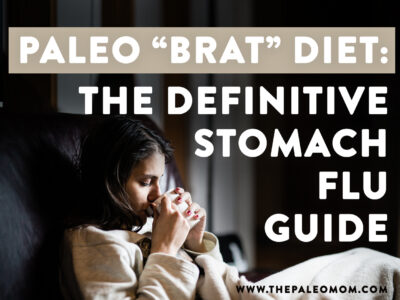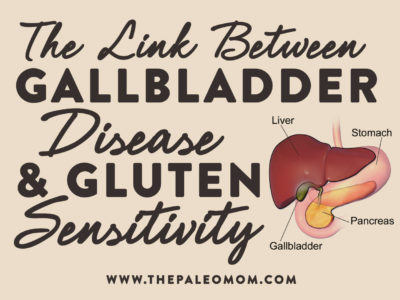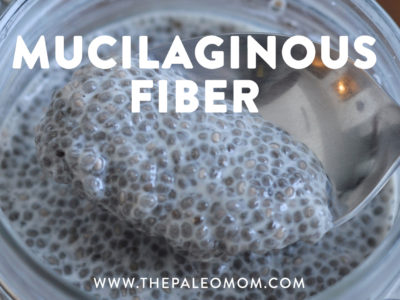Throughout the research for my first book, I kept hitting on a recurring theme. Dietary fiber is essential for good health. But I also kept hitting on pieces of information that went contrary to conventional wisdom (even contrary to conventional Paleo wisdom). Tidbits like insoluble fiber is even more beneficial than soluble (in spite of the fact that the vast majority of studies only evaluate the benefits of soluble fiber). Even more mind-blowing for me was learning that the whole insoluble fiber being abrasive thing is a myth. In fact, the deeper I delved into this subject, the more information I learned that completely challenged everything I thought I knew about this non-essential nutrient. And, the more everything started to make much more sense too.
I have been working on this series of posts for six months and am finally ready to share this information with you. I have broken this immense topic into five posts. The first post summarized some the correlative and prospective studies that have been done showing the benefits of diets rich in dietary fiber. The second post detailed the different types of fiber. The third post summarized the research showing that insoluble fiber has more health benefits than soluble fiber. This post will continue the discussion of soluble versus insoluble fiber by discussing the most commonly used rationale for why we need more fiber in our diets anyway: to lower cholesterol (you can probably guess already that this post won’t be towing the part line).
Part 4: Fiber, Cholesterol and Bile Salts
One of the reasons that fiber is recommended as part of our diets is its cholesterol-lowering effects. And, I feel like any post series on the health benefits of fiber would be incomplete without discussing this aspect of dietary fiber. Of course, this is also opens a whole can of worms.
Probably the first place to start is the fact that high blood cholesterol is not the cause of cardiovascular disease. This recent article in the British Medical Journal explains the current state of knowledge with regards to saturated fats (also not the cause of heart disease and in fact low saturated fat increases your chances of dying from cardiovascular disease… I told you this was a can of worms!) and cholesterol with regards to cardiovascular disease, obesity, and metabolic syndrome.
Having high blood cholesterol is analogous to having a runny nose when you have a cold. It’s a symptom, not a cause. And just like taking a pseudoephedrine to decongest your nose doesn’t help your body fight the cold virus (although it does make you feel better), taking cholesterol lowering drugs or artificially lowering your cholesterol through high soluble fiber intake or supplements just reduces the symptom and doesn’t do anything to address the root causes.
To understand how soluble fiber reduces cholesterol, it’s important to understand a little bit about enterohepatic circulation.
Bile salts (also called conjugated bile acids) are produced by the liver, stored in the gallbladder, and then secreted into the small intestine after eating. They are necessary to digest fats. Bile salts act as an emulsifier (or detergent), by breaking apart large fat globules so that lipases (digestive enzymes produced by the pancreas that break down fats into individual fatty acids) can more effectively do their job. Bile acids also facilitate absorption of fats and fat-soluble vitamins by creating structures called micelles—aggregates of fatty acids, lipids, cholesterol, and fat-soluble vitamins—which are water soluble and easily absorbed by the cells that line the small intestine (the enterocytes).
Bile salts are created from cholesterol. Cholesterol molecules (which also form the backbone of all steroid hormones like vitamin D, cortisol and estrogen) is first converted into one of two types of fatty acid (cholic acid and chenodeoxycholic acid) and then conjugated (joined together) with the amino acids glycine or taurine to create a detergentlike structure—bile salts (that’s also where the name conjugated bile acids comes from).
Cholesterol itself is also secreted into the small intestine in the bile. The main function of this cholesterol is facilitating absorption of fat and fat-soluble micronutrients as a critical component of micelles. Cholesterol is also an essential component of another important structure called chylomicrons. After fatty acids, cholesterol and fat-soluble vitamins are absorbed by the cells that line the small intestine (the enterocytes), the cells repackage these components into structures called chylomicrons. Chylomicrons are delivered to the other side of the enterocyte and then circulate through the body via the lymphatic system. Without either cholesterol or bile acids in the gastrointestinal tract, the body cannot digest and absorb essential fatty acids nor fat-soluble vitamins.
The majority (up to 90 percent) of bile salts and cholesterol molecules secreted into the gastrointestinal tract are reabsorbed by the small intestine and recycled back to the liver for reuse (this process is called enterohepatic circulation). This recycling is important because the liver would not otherwise be able to keep up with the demand for bile salts.
Many types of soluble fiber have strong cholesterol-binding and bile salt-binding properties (especially beta glucans, psyllium, mucilages, and gums and to a lesser degree inulins and pectins). This binding in the gastrointestinal tract, stops the incorporation of cholesterol and bile salts into micelles and therefore stops the absorption or reabsorption of these molecules. (This, by the way is also how two different classes of cholesterol lowering drugs work: bile acid resins like Colestid, and cholesterol absorption inhibitors like ezetimibe.) This then has the effect of lowering total blood cholesterol, both because less cholesterol is reabsorbed and because the liver is required to synthesize more new bile salts. This sounds like a good thing, right? However, don’t forget that not only is blood cholesterol not the cause of cardiovascular disease but that cholesterol serves important physiological functions in the body. Although high blood cholesterol is not desirable, stopping the reabsorption of cholesterol in the intestines is an artificial way to lower it and does not address the root problems (inflammation).
In fact, some studies are showing that cholesterol-lowering drugs and functional fibers (isolated fiber used for supplementation) can lead to deficiency in some fat-soluble vitamins. While statins work through a different mechanism (they stop cholesterol synthesis in the liver), vitamin E deficiency can be a result of their use. Chitosan, which is under investigation as a functional fiber supplement to lower cholesterol, also causes vitamin E deficiency (but no effect on Vitamin A). Of course, inulin fiber supplementation has been shown to increase calcium and magnesium absorption and improve bone health, so clearly the effects are complicated.
What is the takeaway message here? Eating soluble-fiber rich foods in order to lower your cholesterol level is not going to actually reduce your risk of cardiovascular disease. Much more important factors are: that you aren’t consuming more calories than you need; that you aren’t consuming large amounts of refined carbohydrates (especially high fructose content processed foods); and that you leading an active lifestyle, managing stress and getting enough sleep. Insoluble fiber will protect the normal recycling of bile salts and cholesterol, enabling optimal digestion and absorption of essential fatty acids and fat-soluble vitamins. Not that soluble fiber is bad for you, because it isn’t, but here is another reason to stop focusing on soluble as the “good fiber” because the arguments for its superiority are disappearing rapidly.
Dikeman CL and Fahey GC. Viscosity as related to dietary fiber: a review. Crit Rev Food Sci Nutr. 2006;46(8):649-63.
Dikkers A and Tietge UJF, Biliary cholesterol secretion: More than a simple ABC World J Gastroenterol. 2010 December 21; 16(47): 5936–5945.
Galli F, and Iuliano L. Do statins cause myopathy by lowering vitamin E levels? Med Hypotheses. 2010 Apr;74(4):707-9.
Holloway L, et al, Effects of oligofructose-enriched inulin on intestinal absorption of calcium and magnesium and bone turnover markers in postmenopausal women. Br J Nutr. 2007 Feb;97(2):365-72.
Jenkins DJ, et al, Effect of a very-high-fiber vegetable, fruit, and nut diet on serum lipids and colonic function. Metabolism. 2001 Apr;50(4):494-503.
Jenkins DJ, et al, Effect of a diet high in vegetables, fruit, and nuts on serum lipids. Metabolism. 1997 May;46(5):530-7.
Sauter G, et al, Effect of dietary fiber on serum bile acids in patients with chronic cholestatic liver disease under ursodeoxycholic acid therapy. Digestion. 1995;56(6):523-7.
Vrzhesinskaia OA, et al, [The effect of various levels of chitosan in rat diet on vitamins assimilation under their combined deficiency]. Vopr Pitan. 2011;80(4):56-61.












